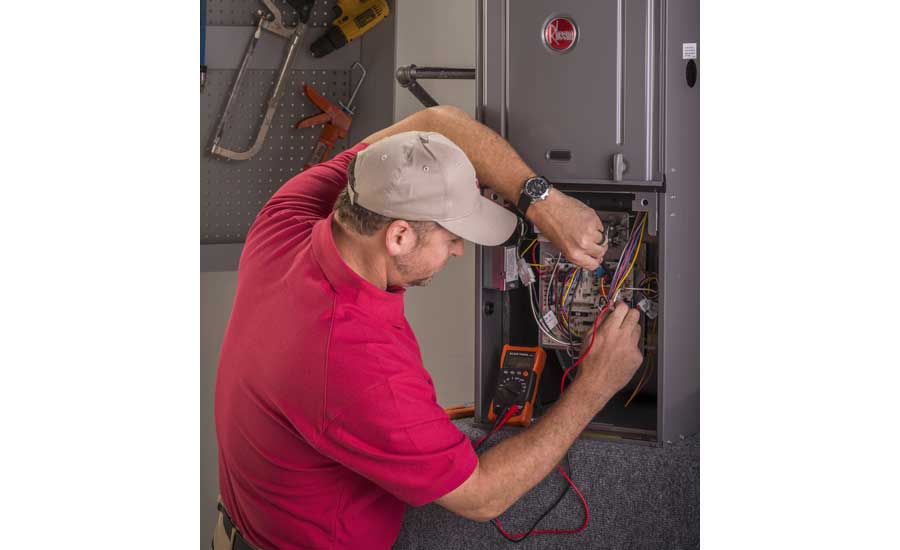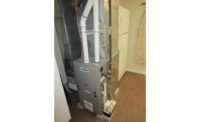When Independence Day rolls around this year, many manufacturing leaders will fire up the grill with a sigh of relief. Not only will they have the day off, but they will enjoy the first day of freedom from what has been five years of preparations for the first national efficiency standards for furnace fans.
Manufacturers have been working in anticipation of this transition since 2014. But after July 3, if the process stays on schedule (more on that later), the burdens and opportunities surrounding this regulation will then largely shift to contractors.
WHAT’S A FER?
Some manufacturers, including Heil Heating and Cooling, have tried to be proactive in delivering information about the change. A dedicated page on Heil’s site explains that FER specifies a maximum fan energy rating that varies on the airflow provided by the furnace fan.
FER, it elaborated, is expressed in terms of watts per 1,000 cfm delivered, considering energy consumption in three different modes: heating, cooling, and constant circulation.
Just the furnace fan in a 70,000 Btu/hour furnace consumes up to 1,000 kWh annually, according to the company.
The regulation’s objective is predictable — reduce energy consumption, reduce carbon pollution — but its intended impact is ambitious.
“These new standards,” said Heil, “will require a whopping 46 percent watt reduction over a typical PSC furnace.”
Regal Beloit is another manufacturer working to establish itself as an information resource in this area. It has created a “Fan Energy Regulations Resource Center” on its website.
There, it notes that furnaces represent up to 10 percent of all energy costs for a home. Calculating the intended big-picture efficiency gains over 30 years, Regal estimates the rule’s effect will be “equivalent to 500 billion kWh, and a 180 million metric ton CO2 reduction.”
| Table 1: Required Reference System Criteria (i.e., ESP at Maximum Airflow) by Furnace Fan Installation Type | |
| Installation type | ESP at maximum airflow (in. wc) |
| Units with an internal evaporator coil | 0.50 |
| Units designed to be paired with an evaporator coil | 0.65 |
| Units designed to be installed in a mobile home | 0.30 |
MANY PATHS, ONE DESTINATION
In light of the new rule, much of the industry attention has focused on the motors running those furnace fans.
To be fair, though, motor choices may lead the way in many cases, but it’s not the sole way to take steps toward this performance target.
“DOE [Department of Energy] regulations require furnace manufacturers to meet a specific energy efficiency level, but it does not mandate the type of technology to be used,” said Nicole George, Eaton’s product manager — pumping variable frequency drives. “Depending on horsepower, a combination of external sensors, controls, variable-frequency drives, or electronically commutated motors (ECM) can be used to achieve the new efficiency standards.”
George pointed out that some of the furnaces presently on the market might already be performing at levels sufficient to meet the new standard.
| Table 2: Airflow-Control Settings at Which Measurements are Required for Each Product Type | |||
| Product type | Airflow-control setting 1 |
Airflow-control setting 2 |
Airflow-control setting 3 |
| Single-stage Heating | Default constant circulation | Default heat | Absolute maximum |
| Multi-stage or Modulating Heating | Default constant circulation | Default low heat | Absolute maximum |
A PAIR OF THREES
Alex Wiegmann elaborated on that possibility during his presentation on DOE regulations and industry impact at the AHR Expo in January. Wiegmann is market manager for HVACR for Nidec Corp.
The higher-end units, he said, are likely already meeting the new regulation with no modifications required. Builder-grade units with PSC motors are unlikely to achieve the required FER without converting to ECM motors.
Wiegmann said the equipment that presents the biggest challenges for meeting the FER target are those that fall into one or more of three categories:
- Units whose heating maximum airflow is equal or greater than the cooling airflow;
- Units whose capacity is the highest that can be accommodated in a given cabinet size; and
- Units where the capacity is relatively low, with Wiegmann mentioning that larger units are easier.
Wiegmann reminded attendees that ECM motors are also known as Brushless DC (BLDC) or sometimes just DC motors.
He also reviewed a trio of ECM motor types, each of which may offer a different degree of usefulness and a different balance of economy and efficiency in the effort to meet FER requirements.
- Constant cfm motors react to system static pressure changes by adjusting motor torque up or down to maintain system design airflow performance.
- Constant torque motors react to system static pressure changes by adjusting motor RPM up or down to maintain a pre-programmed torque setting for each speed tap.
- Constant speed motors do not react to system static pressure changes, continue to run at the pre-programmed RPM, and are not commonly found in indoor blower applications.
CONTRACTOR UPSIDE(S)?
Not always the case when it comes to corporations and new governmental regulations, sources for this article seemed upbeat about FER. Regal and Heil used supportive language when it comes to the regulation, citing expected energy conservation and customer benefits. Heil predicted that since this is the first time this area has ever had efficiency and reporting requirements, the increased spotlight could spur innovation.
Nidec’s Wiegmann reported that DOE expects $9 billion in homeowner savings. That potential lure starts to point toward an “in” for contractors, George said.
“For contractors, they can use this as a differentiator by acting as an educational arm to their customers on effective ways to save on energy costs,” she said.
She also observed that every retrofit, maintenance, and repair visit will now be a possible opportunity for that conversation.
Wiegmann agreed this will be another chance for some consumers to take a higher upfront cost and open the door to operational savings over the furnace’s lifetime. He also noted that the new standard may allow contractors to reduce or simplify their truck stock.
Contractors working on new construction will not have to worry about sorting between available compliant or noncompliant furnaces (other than avoiding any confusion with existing inventory). Part of the reason manufacturers have had so much to do with regard to this change is that, as Heil said, each furnace manufacturer must ensure their entire line of furnaces is in compliance by that date.
| Table 3: Estimated National Average Operating Hour Values for Calculating FER | |||
| Operating mode | Variable | Single-stage (hours) | Multi-stage or modulating (hours) |
| Heating | HH | 830 | 830/HCR |
| Cooling | CH | 640 | 640 |
| Constant Circulation | CCH | 400 | 400 |
|
For multi-stage heating or modulating heating products, the specified operating hours for the heating mode are divided by the heating capacity ratio (HCR) to account for variation in time spent in this mode associated with turndown of heating output. The HCR is the ratio of the measured reduced heat input rate to the measured maximum heat input rate.
The FER equation is: |
|||
| FER = |
(CH x EMax)+(HH x EHEAT)+(CCH x ECirc)
(CH + 830 + CCH) x Max |
x 1000 | |
WHAT COULD GO WRONG?
So, about “that date.”
The Air-Conditioning, Heating and Refrigeration Institute (AHRI) had filed a petition to drop the July 3 enforcement date, and that had put the question of postponement or nonenforcement up in the air. However, AHRI’s general counsel, Caroline Davidson-Hood, issued the following statement on Jan. 24.
“AHRI had submitted a request for nonenforcement, which was temporarily granted by the department. We are grateful for the department’s support and stand behind our petition for rulemaking. However, industry is never comfortable with uncertainty. Because the timeline for any future rule cannot be ascertained, AHRI members have chosen the path of certainty and will support FER enforcement in the short term while continuing to advocate for a test procedure and metric change to AFUE2.”
So for now, the planned July 3 date seems likely to remain in place.
Were the FER wording to fail to take effect for some other reason, Wiegmann warned the AHR session attendees to keep other factors in mind. California has indicated that it will consider the FER requirement as law, regardless, he advised. States may pick up an idea even when it has receded on a federal level.
But as it stands, July 4 will be an especially big day. After the fireworks clear, contractors will have many new (or newly tweaked) furnace models available to attract consumers of various budgets and attitudes, another layer of possibilities for retrofit business, and some explaining to do with homeowners if they want to pursue the business upside of this newest regulation.
Publication date: 2/25/2019
Want more HVAC industry news and information? Join The NEWS on Facebook, Twitter, and LinkedIn today!








